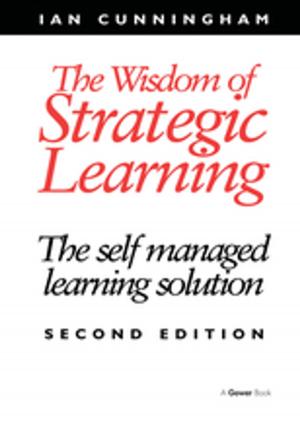Mergers and Acquisitions
The Critical Role of Stakeholders
Business & Finance, Economics, Consolidation & Merger, Finance & Investing, Corporate Finance, Development & Growth| Author: | ISBN: | 9781136278402 | |
| Publisher: | Taylor and Francis | Publication: | November 12, 2012 |
| Imprint: | Routledge | Language: | English |
| Author: | |
| ISBN: | 9781136278402 |
| Publisher: | Taylor and Francis |
| Publication: | November 12, 2012 |
| Imprint: | Routledge |
| Language: | English |
A merger or acquisition is usually a challenging endeavor with a single ultimate aim: to create value for the owner. However, stakeholder theory shows how such a narrow and one-sided focus is detrimental to value-creation in general – not only for other stakeholders within and outside the organization, but also for the owner. Especially in a merger or an acquisition, it is evident that there are many groups and individuals who have a stake in the success or failure of a business.
So far, the overwhelming majority of research in the field of mergers and acquisitions has focused on the merging organizations, and so researchers have mainly studied internal stakeholder groups, such as employees and managers. This book shows how different stakeholders, internal and external, may play a critical role during a merger or an acquisition process. The book builds on empirical examples that illustrate how various stakeholders play active roles throughout the different phases, and, thus, ultimately affect the outcome and the value formation process of the merger or the acquisition. There is still much debate on how and when to best measure the outcome of a merger or an acquisition. With its comprehensive focus on stakeholders, this volume explores why some mergers and acquisitions fail while others succeed.
A merger or acquisition is usually a challenging endeavor with a single ultimate aim: to create value for the owner. However, stakeholder theory shows how such a narrow and one-sided focus is detrimental to value-creation in general – not only for other stakeholders within and outside the organization, but also for the owner. Especially in a merger or an acquisition, it is evident that there are many groups and individuals who have a stake in the success or failure of a business.
So far, the overwhelming majority of research in the field of mergers and acquisitions has focused on the merging organizations, and so researchers have mainly studied internal stakeholder groups, such as employees and managers. This book shows how different stakeholders, internal and external, may play a critical role during a merger or an acquisition process. The book builds on empirical examples that illustrate how various stakeholders play active roles throughout the different phases, and, thus, ultimately affect the outcome and the value formation process of the merger or the acquisition. There is still much debate on how and when to best measure the outcome of a merger or an acquisition. With its comprehensive focus on stakeholders, this volume explores why some mergers and acquisitions fail while others succeed.















